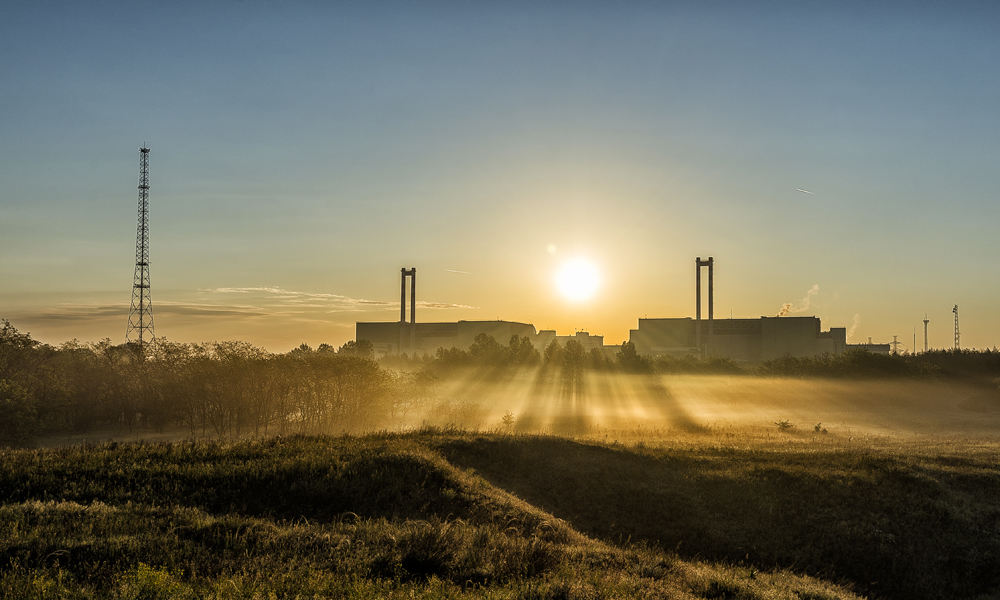
EC Investigation into Paks II Deal Finished
back to contents“The European Commission has concluded that Hungary’s financial support for the construction of two nuclear reactors at Paks involves state aid. It [the EC] has approved this support under EU state aid rules on the basis of commitments made by Hungary to limit distortions of competition,” the EC statement says. The commission also stresses that any potential profit from Paks II will be used either to finance the country’s investments or cover day-to-day expenses of the nuclear power plant. “Profit cannot be re-invested in the construction project or used to acquire additional generating capacity,” the EC notes.
Rosatom welcomed the completion of the EC investigation into the Paks II project. “The construction of two new units at Paks is a mutually beneficial project for both Russia and Hungary, and we are happy to kick it off at last. Hungary will receive the latest Russian-designed Generation 3+ reactors that meet post-Fukushima safety requirements and IAEA guidelines. Similar reactors are set to be built in Finland, Turkey, Bangladesh and other countries,” said Rosatom First Deputy CEO Kirill Komarov.
The new power plant is vital
Power generated by Hungary’s operating units satisfy a third of its domestic demand for electricity. Once they are shut down, their capacity will have to be replaced with another power source. Replacement options for Hungary are limited – it is either construction of new capacity in the country or import of electric power from abroad. But it is natural that a country wants to be self-sufficient in energy. Besides, the last winter in Europe showed that relying on energy imports was short-sighted at best. As it is, 30% of energy consumed by Hungary is already imported. For these obvious reasons, Hungary will need an internal power source to provide base load after the 2030s. No less obvious is that the 2,000 MW capacity cannot be replaced with renewable sources. Power stations fired with coal or gas will not make up for this capacity either since their share in the European energy mix is to be reduced under the EU strategy for combating climate change and greenhouse gas emissions.
In this context, Hungary’s decision to swap its existing nuclear capacity for new reactors on the same site seems logical. A more viable solution is now hard to find.
Another strong argument for keeping nuclear power in Hungary’s energy mix is the cost of electricity generated by Paks, now only 11 forints per kilowatt. Thanks to low generation costs, Hungarian consumers pay about 10 eurocents for one kilowatt of electricity, while the price in Germany is nearly 30 eurocents.
Contribution to economy
Economic impact is one more benefit a large-scale nuclear project brings to its home country. Nuclear construction will boost the national economy, increase employment, bring in new contracts for local businesses and tax revenues for the budget, and facilitate research and so on. The project will create up to 10,000 new jobs.
From the very beginning, the Hungarian government had been showing commitment to the project and taking a strong stand in the talks with the European Commission. As a result, the EC agreed to Hungary’s point, and the project was cleared.
Hungary serves as a model for those countries that plan to build new sources of nuclear power. Step by step, the country was working its way to the construction of new reactors and securing national energy self-sufficiency.
Licensing ahead
Paks II has passed the environmental licensing procedure and, according to Attila Aszódi, Hungarian Government’s commissioner for the Paks expansion project, a construction license is expected to be obtained this spring. As soon as it is cleared by the European Commission, the project will enter its active phase. According to Hungarian officials, construction operations will begin in 2018.
Rosatom as a technology vendor was a logical choice for Hungary that has had a positive experience of working with VVER technology and Russian experts at the operating reactors of the Paks nuclear plant. Russia’s new VVER-1200 design is among the world’s best Generation 3+ reactor designs. More important is that the new design has already been proven in use at the Novovoronezh nuclear plant and put in commercial operation in late February. Russia will also grant Hungary an attractive loan to finance 80% of the project costs.
Paks II profitability
It is hard to forecast electricity prices on a 10-year horizon as they are influenced by a host of factors, ranging from the supply and demand balance and fuel prices to carbon dioxide emission quotas and subsidies on renewables.
If we consider price trends on the Hungarian wholesale power market, we will see that the megawatt-hour has not been priced below 50 Euros recently. For three weeks in January, the price was even in the range of 80–100 Euros, occasionally rising to 150 Euros per megawatt-hour.
Assuming that most European generating facilities are halfway through their service lives and will be phased out within the next 25 years, electricity price growth in the coming decades seems plausible. We have had a chance to see in the recent weeks how sensitive the European power markets are to plant shutdowns. In France, the price of electric power has doubled for the recent months to hit new highs amidst power plant shutdowns and growing demand for electricity.
In this situation, 55 Euros per megawatt-hour in the mid-2020s stated by the Hungarian government as a minimum for Paks II to remain profitable seems a realistic price.




